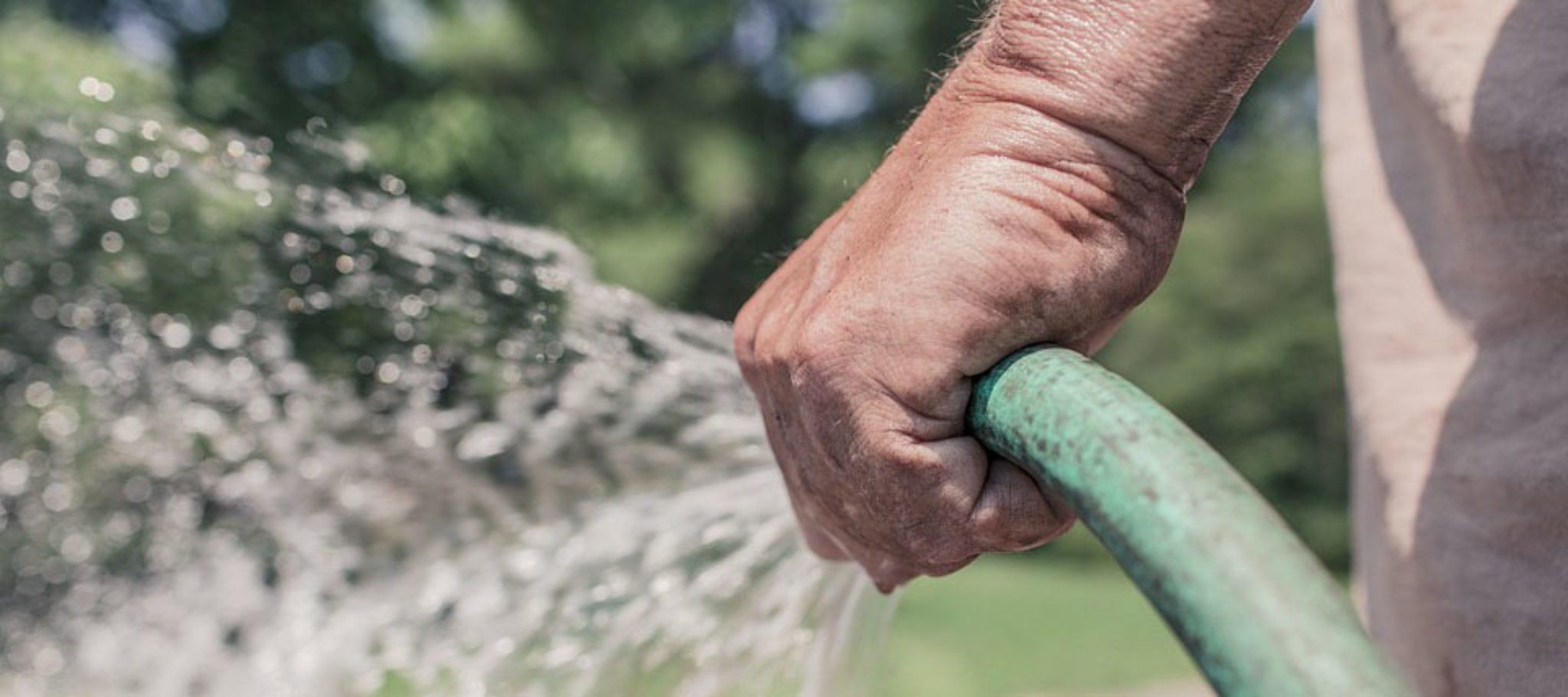In our arid, high desert climate, lack of sufficient water is one of the most common reasons shrubs and trees perish. Even though most of our plant material is in dormancy during the colder winter months, it still needs regular water to survive. Without enough natural precipitation, it can be a challenge during the winter because irrigation systems have been winterized. A good rule of thumb is that most plant material needs to receive a minimum of 1” of precipitation per month. If we do not receive that 1” minimum, we recommend supplemental winter watering.
Feeder roots, which take up water and nutrients for the entire plant, don’t grow where water is not present. If water is not available for extended periods of time, feeder roots die off. Since plants have stored energy from the fall season, they may come back looking fine in spring, but damage to roots can have lasting effects. If not properly watered in winter, we may see plant death or insect and disease problems in late spring or summer when high summer temperatures set in.
It is best to apply supplemental water during mid-day to allow the water to percolate through the soil before freezing temperatures at night.
Some plants are more susceptible to drought stress during the winter, including newly planted or shallow rooted plants.

Newly Planted
Shrubs and trees planted in the fall may require supplemental water between storms this winter. We recommend performing an extended drip cycle prior to the irrigation system winterization.
Newly planted trees can take up to a year to fully establish their root system making them more susceptible to drought stress during the winter. Its best to water trees more slowly, allowing time for the water to soak in. The damage from tree drought stress may not be visible until 3-4 years later.
When newly planted and still establishing roots, shrubs and perennials need extra water as well. Water should be applied within the dripline of shrubs and around perennials. If planted near buildings or fences, especially on the west side, plants may require more water to compensate from reflected heat.
Newly planted sod or seeded lawn areas are also susceptible to winter damage. Ensure they are watered, but sparingly as a layer of ice on lawns can suffocate the blades of grass.
Shallow Rooted Plants
Some woody plants have shallow root systems and are more sensitive to winter drought stress, including Birches, some Maples, Lindens, Alders, Hornbeams, Dogwoods, Willows and Mountain Ashes. Also, evergreen plants will benefit from supplemental winter water, including Spruce, Fir, Arborvitae, Oregon grape, and Euonymus.
At Reno Green Landscaping, we provide winter watering service to our clients on an as-needed basis, if the ground is not frozen, air and soil temperatures are above 40 degrees F and there is no snow covering the ground. It’s important to RGL that your landscape is looking its best year-round.
Resource: https://extension.colostate.edu/topic-areas/yard-garden/fall-and-winter-watering-7-211/